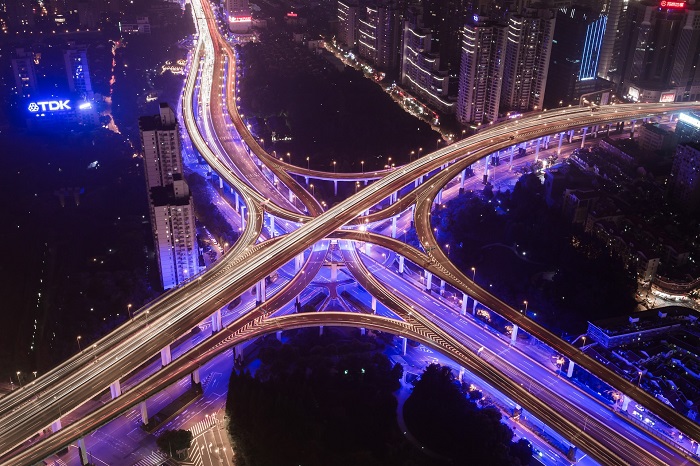ISABEL RUBIO ARROYO | Tungsteno
A technology that turns any countertop or surface into a charger, an autonomous machine that eliminates algae harmful to water quality and a biometric solution that puts an end to privacy concerns. We take a look at the most innovative inventions for smart cities and smart homes, according to the Consumer Technology Association (CTA), the organisation that organises CES, the world's largest annual technology event.
A countertop that charges your phone
FreePower can turn any countertop into a wireless charger—from a restaurant bar to a kitchen island or home office desk. "Early adopters of wireless charging technology are probably familiar with this scenario: placing a device on your charger before you go to bed, then waking up to a dead battery because it wasn’t aligned with the charger’s ‘sweet spot’," say the creators. Their technology features a free-standing architecture that does not require precise alignment. In other words, the user can avoid these problems and charge a mobile phone, headphones or console controller simply by placing it on the surface in question.
A cube that turns air into water
One of the most remarkable inventions at CES in terms of sustainability is an inflatable farm for growing food sustainably in deserts and drought-stricken areas. It is in these challenging places that another of the CTA's award-winning devices can be particularly useful: a device that creates water out of thin air. Called WaterCube 100, it can theoretically produce more than 100 gallons (378 litres) of fresh water a day. That would be enough for a household of four, according to its creators, who don't offer many details on how the technology works, but say that it "mimics nature's process to extract water from the air."
WaterCube 100 is a device designed to generate water from air. Credit: Genesis Systems
A window that generates electricity
From a floor that generates energy from footsteps to autonomous boats controlled by artificial intelligence, those were some of the most innovative green technologies of recent years. At this year's CES event, held between 9 and 12 January in Las Vegas, transparent solar glass called SQPV glass, which can capture light from both sides of the glass, won an award. Its creators claim that in addition to generating electricity from sunlight, it "can also harness energy from invisible light, even in dimly lit indoor settings or on a cloudy day."
A machine that eliminates harmful algae
Harmful algae and cyanobacteria can produce toxins that can make people and animals sick and harm the environment, according to the US Centers for Disease Control and Prevention (CDC). Manual removal of these algae can be costly and carries some risks. The CTA points out that harmful chemicals are sometimes used and that environmentally friendly solutions take too long to take effect. That's where AI ECO ROBOT comes in, an autonomous system that promises to remove these algae and identify potential problems quickly and efficiently.
AI ECO ROBOT removes harmful algae from lakes, rivers and oceans. Credit: Jason Park
A privacy-friendly biometric solution
Facial recognition raises privacy concerns, not least because of the collection and storage of biometric data. The company Ghostpass aims to store biometric information individually on users' smart devices, rather than in bulk in the cloud. "Our solution is to send the biometric data detected by the authentication request to the user's smartphone for authentication. This allows the user to fully own the sovereignty of biometric information," it explains.
These are just some of the most innovative devices for smart cities and smart homes of the 21st century. But there are many more: from a pool-cleaning robot charged by the sun to plug-in smoke detectors, beds that monitor the heart rate and breathing of dogs and cats, or all kinds of smart mirrors. According to the CTA, all these devices share a common goal: "Energy efficiency and automation are leading trends in this sector, and consumers prefer products that save time and money while improving safety and overall well-being."
Tungsteno is a journalism laboratory to scan the essence of innovation.
